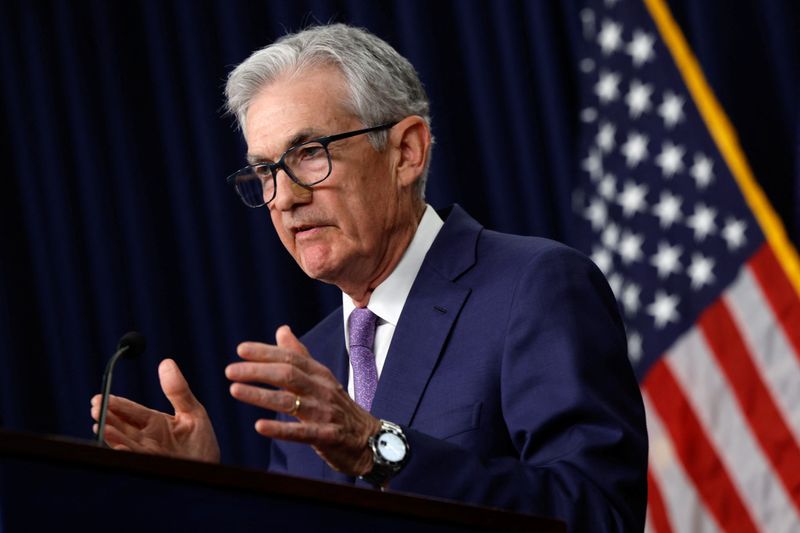Investing.com — The Federal Reserve is widely tipped to slash interest rates at the conclusion of its latest two-day meeting this week, but uncertainty still surrounds the scope of the potential reduction.
According to CME Group’s (NASDAQ:CME) closely-monitored FedWatch Tool on Monday, the odds that policymakers will roll out a 50-basis point cut, rather than a more traditional 25-basis point drawdown, stood at 59%. Borrowing costs are currently at a 23-year high of 5.25% to 5.5%.
Over the weekend, bets between a quarter-point and half-point decrease were equal, in a sign of the rapidly shifting debate around the cuts.
Just last week, investors, persuaded by data last week showing slightly hotter-than-anticipated producer and consumer price growth in August, had placed a higher chance on a quarter-point cut. But recent media reports have suggested that the argument for a 50-point reduction remains in play, while former New York Fed President Bill Dudley said the case for such a cut was strong.
In a note to clients on Friday, analysts at Citi said the Fed’s decision is still a “close call,” adding that they are expecting a 25-point cut this week, followed by two 50-point decreases at the central bank’s November and December gatherings.
However, the Citi analysts flagged that “weak enough” retail sales data on Tuesday “could push the Fed to cut 50 [basis points.]” Month-on-month, economists see retail sales growth contracting by 0.2% in August after expanding by 1.0% in July.
Indications of waning activity could spur the Fed to act more aggressively to help prop up the economy. Officials are already weighing stickiness lingering in the recent inflation numbers, as well as figures pointing to a loosening in the American labor market.
Fed Chair Jerome Powell said in August that the “time has come” to adjust monetary policy due to possible “downside risks” facing the jobs picture. The outcome of a potential easing cycle could be one of Powell’s lasting legacies, particularly as the Fed attempts to engineer a so-called “soft landing” — or a cooling in once sky-high inflation that does not lead to a meltdown in labor demand and the wider economy — following a period of elevated interest rates.
How do you think the Fed will approach its latest rate decision? Have your say in our poll on X.

